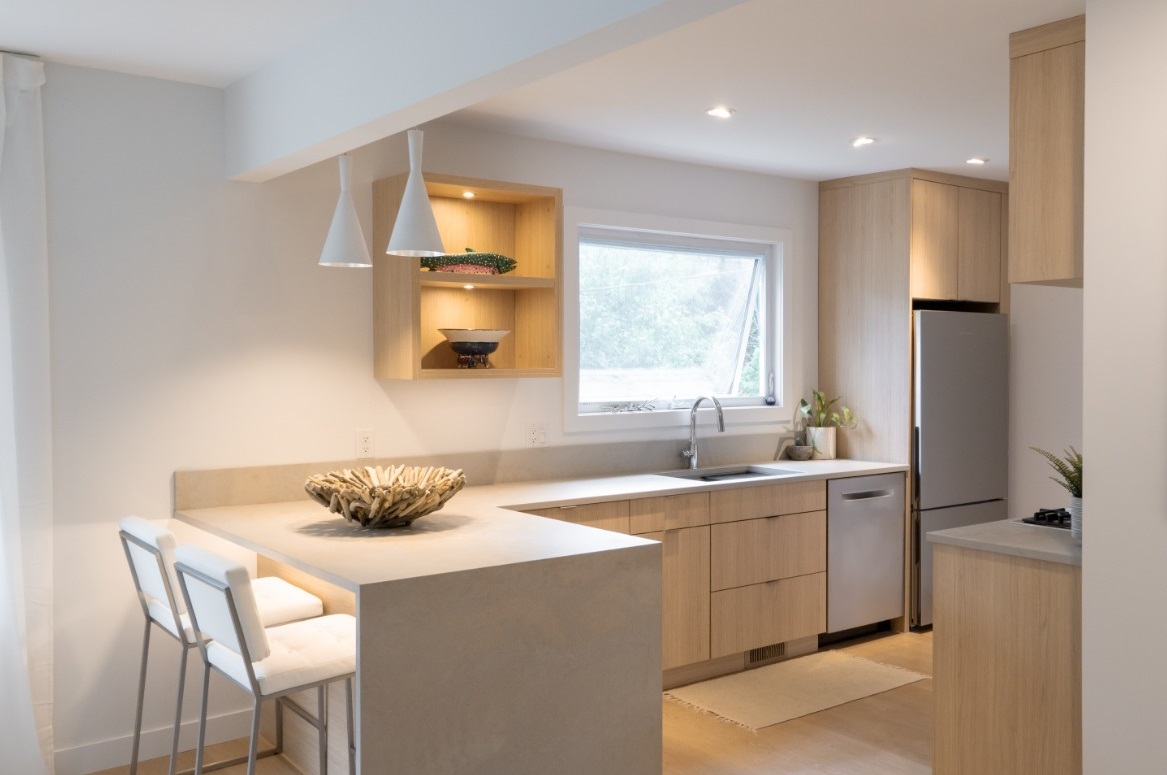For most people, their four walls serve as a haven and an oasis of peace. The minimalist kitchen is the heart of the entire apartment and turns every cooking session into a meditation and relaxation time. With controlled furnishings, new and creative dishes can be created in the kitchen without distractions. At the same time, cleaning up after cooking is a breeze – a completely worry-free experience.
The more complex our daily lives become, the greater our desire for simplicity—the minimum, not the maximum. It sounds logical that previous art movements have given rise to lifestyles that have had a long-lasting influence on our furnishings and how you can incorporate minimalism into the kitchen.
A minimalist touch makes the kitchen look cleaner and neater and saves time looking for the right kitchen equipment. We provide tips for a minimalist kitchen, showing you what’s included in minimalist kitchen basics and what you can easily do without.

Basic principles of minimalism
Influenced by art history, minimalism began to be applied to design and architecture in the 1970s. However, its principles have been around longer than the concept of the trend: reduced formal language, clear lines, restrained colours and a reduction in essentials are ultimately timeless. In minimalism, excess and arbitrariness are replaced by high-quality products that are consciously selected and present in their simplicity. In minimalist living, the focus is on the functional design as well as the aesthetics of the furniture. The art of negligence also has benefits: reduced consumption allows us to live more consciously and sustainably, leaving more space for clear thinking – and money for better quality. This also applies to minimalist kitchens.
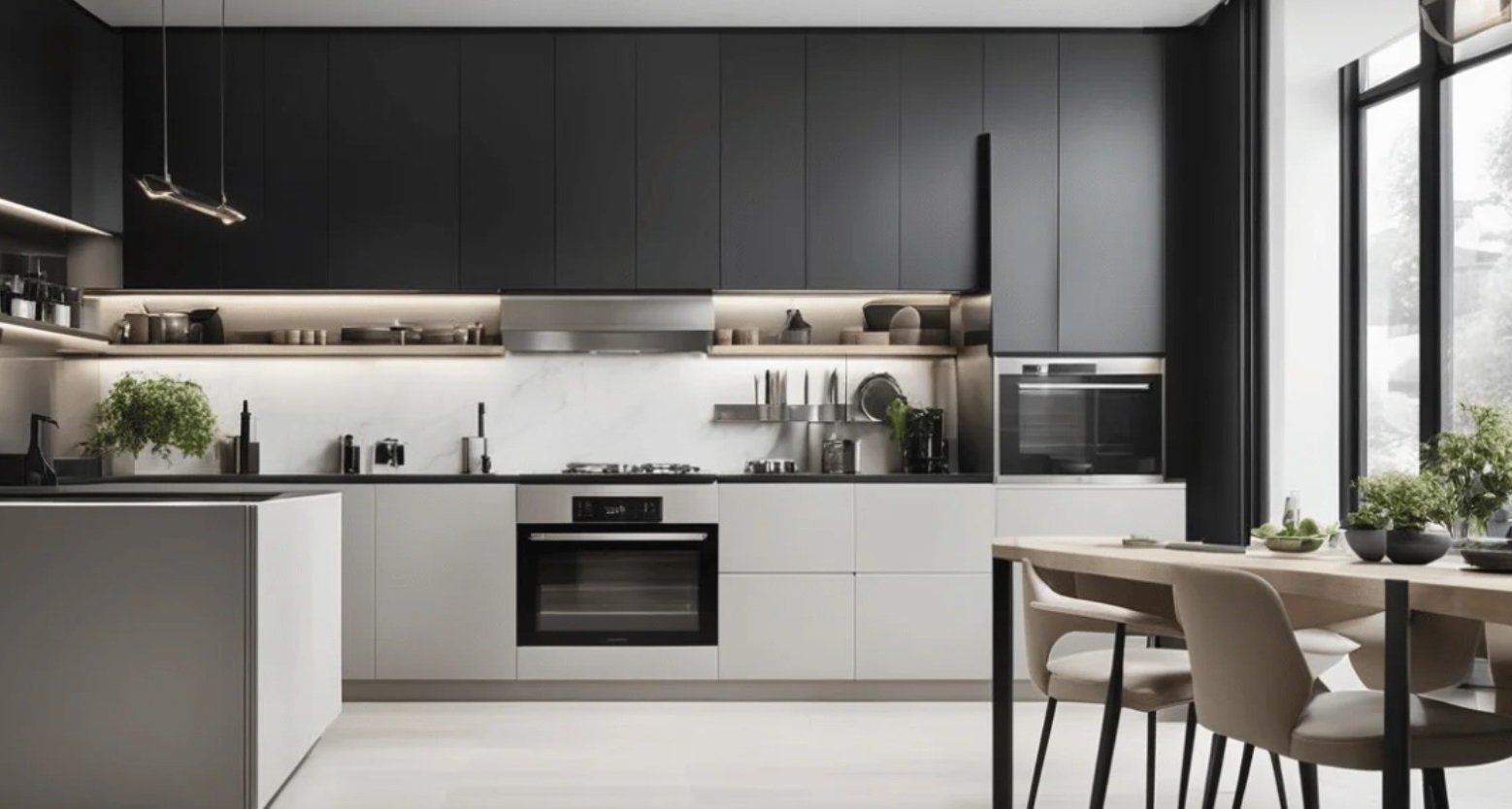
Minimalist Kitchen Design: Here’s How to Get Started!
1. Inventory:
Every change starts with the first step. An inventory of all kitchen utensils, cutlery sets, furniture, and decorative items provides a general idea. It is important to clarify how many and, most importantly, what items are currently in inventory. It can help many people to write down each item to note to get the best overview. This makes it easier to complete afterwards.
2. “Do I need this?”:
If you need to decide which equipment to use and how often, you can put the existing kitchen equipment in a box or box. Within a certain period (for example, within three months), you only need to return items used in everyday life to their place. Seasonal items like Christmas cookie cutters may be excluded from this process and viewed separately.
3. Find a clear line:
Cleaning your kitchen properly also means knowing what the result will look like. The goal is to create uniformity. A mood board or list helps you rethink your furnishings and better visualize the furnishings you want for a new room. Minimalist kitchens are characterized by reduced equipment and optical clarity, monochrome, muted colours, and restrained classic design. Functionality remains the be-all and end-all. But also ask yourself: Are the cleaning supplies in your cupboard well organized?
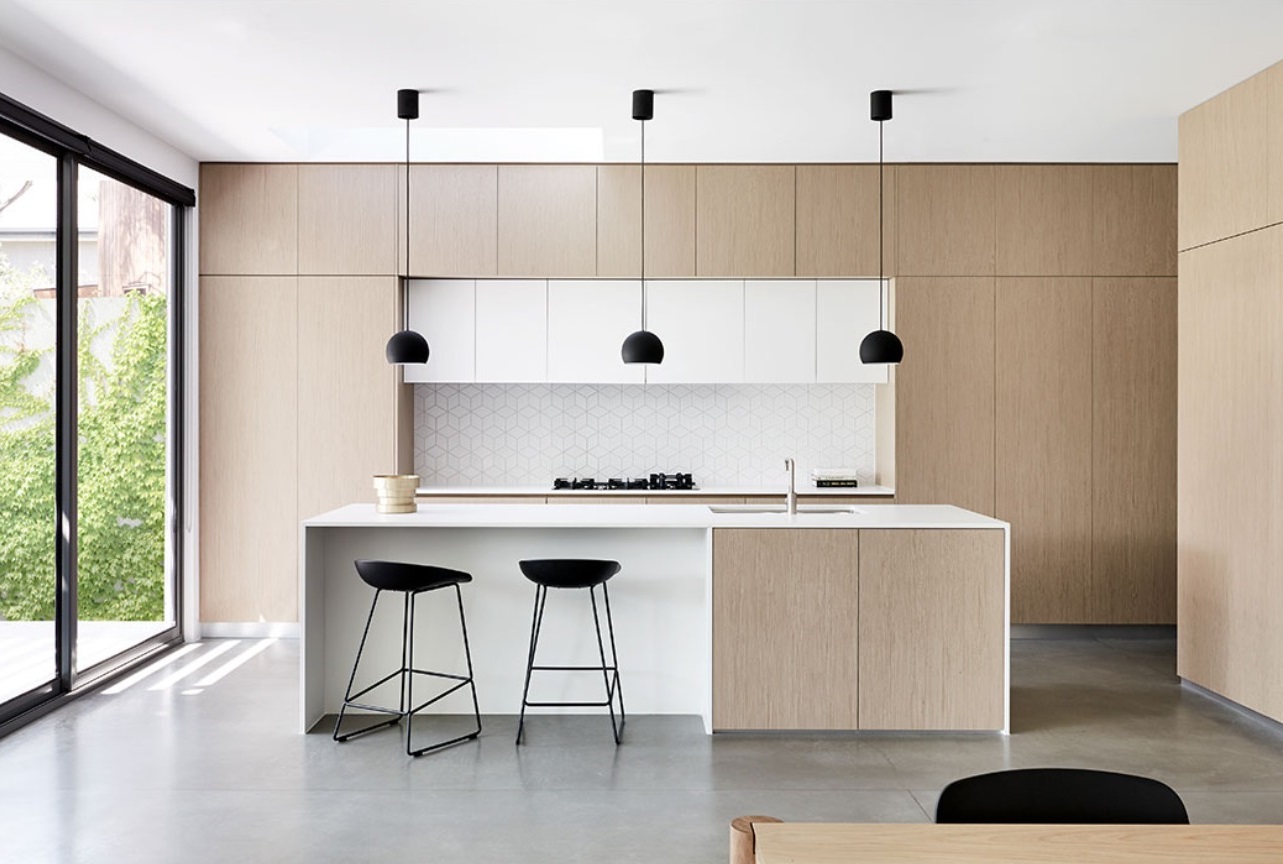
What must be in a minimalist kitchen?
Building a minimalist kitchen appliance requires much effort, as each item is carefully inspected and tested. There is no general rule about how many items you can have to keep your kitchen tidy and minimalist in the long term.
The main question is: What are your personal cooking, baking, and eating habits? This creates an initial picture of individual needs for your minimalist kitchen. Based on your needs, the best way to clean and tidy your kitchen is based on your needs.
How many cups and glasses does a household need?
Cups are classic (promotional) gifts and souvenirs that accumulate in the kitchen for years. Many people have huge collections; usually, they only enjoy a small part of them and find them attractive. Life is too short for unloved porcelain! A minimalist kitchen includes only those cups that are frequently used and, most importantly, loved. The same applies to glass collections: Do so many visitors come regularly that an extensive glass collection is justified?
Bowls and bowls for every meal?
There are bowls of cereal for breakfast, deep-dish soup for lunch, and bowls for dessert. How about limiting yourself to a few bowls that suit every meal and can be used in various ways?
The kitchen helpers were tested.
Today, the right kitchen equipment is available for every task: egg cookers, juicers, presses, and whisks in every size and shape. Do all devices suit today’s cooking habits? Is there a need for each device? Take your time and take a good look at your current kitchen helpers.
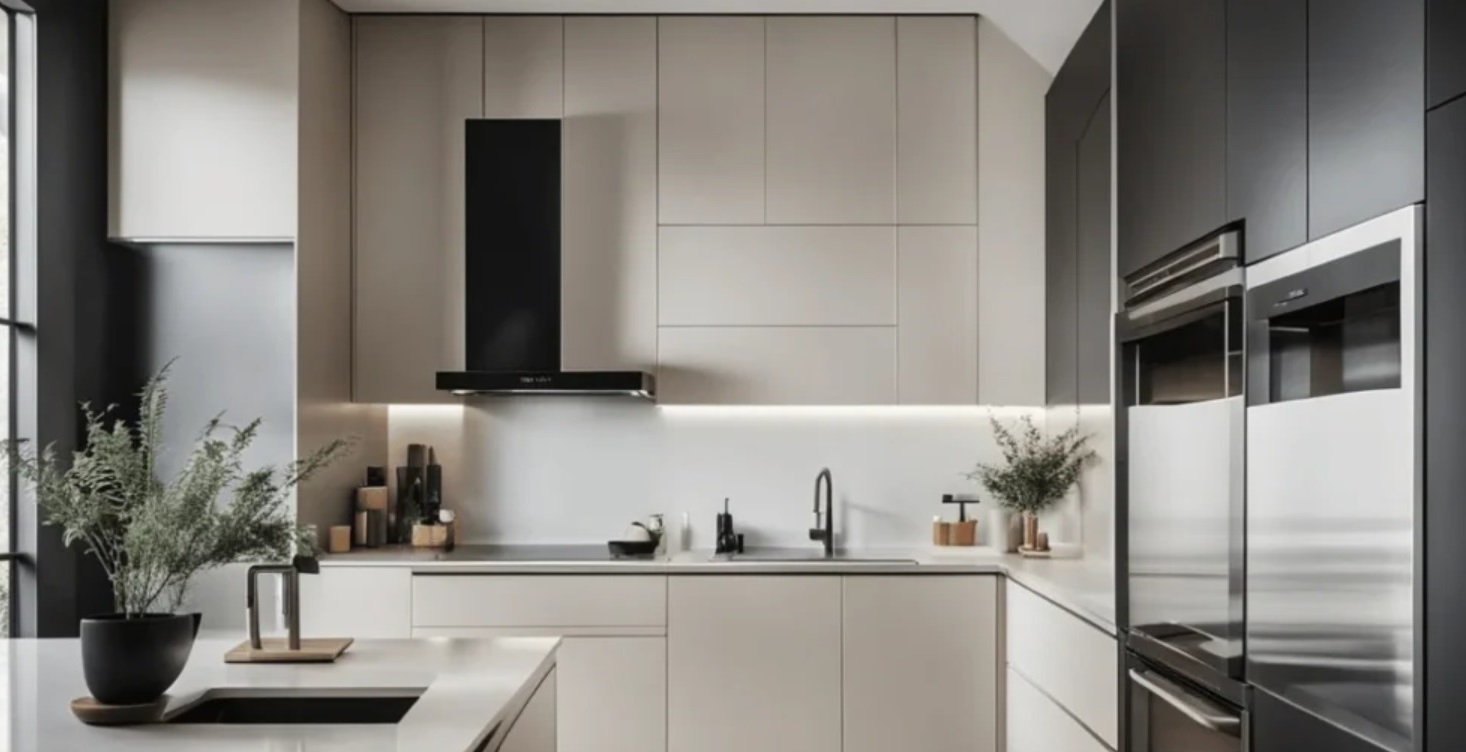
Organize the kitchen properly:
What is there to see, and what needs to be put in the wardrobe? The process includes cleaning your kitchen and organizing other items.
When arranging a minimalist kitchen, it’s best to limit yourself to the essential things. However, that doesn’t mean you must compromise on design – quite the opposite. Well-thought-out storage solutions and multifunctional, well-designed kitchen appliances often align more with minimalist principles than cheap, mass-produced items. Enough cabinet elements to store all the necessary utensils prevent the kitchen counter from becoming a storage area. Once you’ve sorted out everything unnecessary, set everything in a permanent place. Required: This should be a place you can reach with one hand without cleaning it. Experience shows that if kitchen utensils and objects are sorted in fronts and drawers, you will use them more often.
If your kitchen allows space, avoid tall cupboards and classic extractor hoods installed in the upper third of the room. This makes the kitchen look like a long sideboard and automatically makes it calm and tidy. A suitable alternative is a hob extractor, where the extractor hood is integrated into the hob at the same height as the workbench. This also leaves room for a beautiful wall lamp.
A stove whose inductor is integrated directly into the workbench will blend more perfectly. This is a dream for minimalist kitchen lovers who also enjoy a multifunctional faucet that dispenses everything from filtered water to sparkling water to boiling water. This saves the water maker and stove on the workbench.

Minimalist kitchen
Cupboards: Large pots and pans are stored in ample cabinets and drawers.
Baskets: Standing and hanging baskets are not only a great decorative element but are also ideal for organizing the kitchen. They can hold fruits, vegetables, and kitchen utensils.
Jars (Preservatives): Jars are ideal for removing annoying packaging of various sizes and colours from sight. Spices, pasta, rice, and other dry foods can be easily poured into jars, which can be placed in a cupboard or on an open shelf. They also look great with homemade labels.
Roll-up multi-purpose trolley: Roll-up cabinets and elements optimally fill smaller spaces and can also be used in various ways to provide additional storage space.
Dividers: Any divider, such as in drawers containing cutlery, spices, and jars of preserves, provides structure and helps keep the kitchen tidy. This means all ingredients and utensils stay in place permanently and don’t fall over even if you move quickly while cooking.
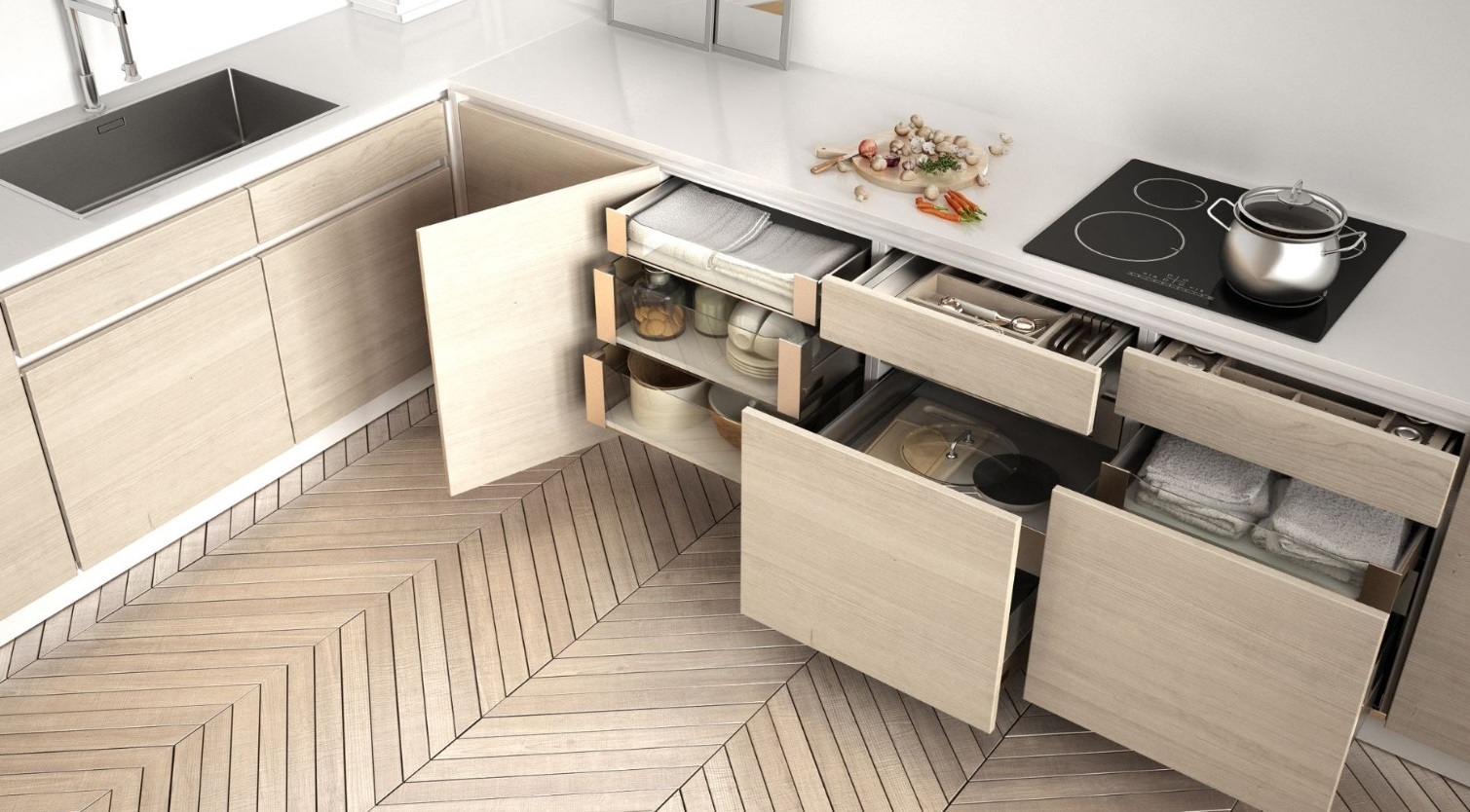
Tidying up the kitchen in a minimalist way: it’s all about personal needs
If you cook a lot and regularly, you need more complete equipment. A minimalist kitchen is not determined by the number of pieces of equipment but rather by awareness of one’s ownership and regular use. A detailed inventory helps keep the kitchen tidy and minimalist in the long term.
Clutter quickly arises, especially in the kitchen, where people cook, eat, and live. Kitchen equipment that quickly accumulates but rarely is used is complex in this environment. Minimalism is not meant to be defined here but rather to be practised and maintained over the long term—and it becomes easier if we think about what we need in the kitchen.
A third measuring cup and an electric citrus juicer take up more space, so they’re useful. And a stand mixer? Is dusting done more often than necessary? Now is the right time to save space in cupboards and work desks and ultimately save time in everyday life. Separate items you haven’t used in the last six months (except cookie cutters, etc.) and only keep devices and equipment that you actively use.
Colours, shapes and materials in a minimalist kitchen
A minimalist kitchen must have clear lines and simple shapes to create a reduced visual impression. The handleless front and large format are made of natural wood such as oak, ash or walnut with a continuous veneer pattern in the vertical direction, creating a natural and high-quality atmosphere. If you rely on colour, subtle colours such as white, cream, brown, or grey are suitable choices. If you like high contrast or impressive monochrome, anthracite or black is the right choice. Important: Colored facades should be painted matt to give the room the calm it needs. Matt black or stainless steel fixtures work best with this.
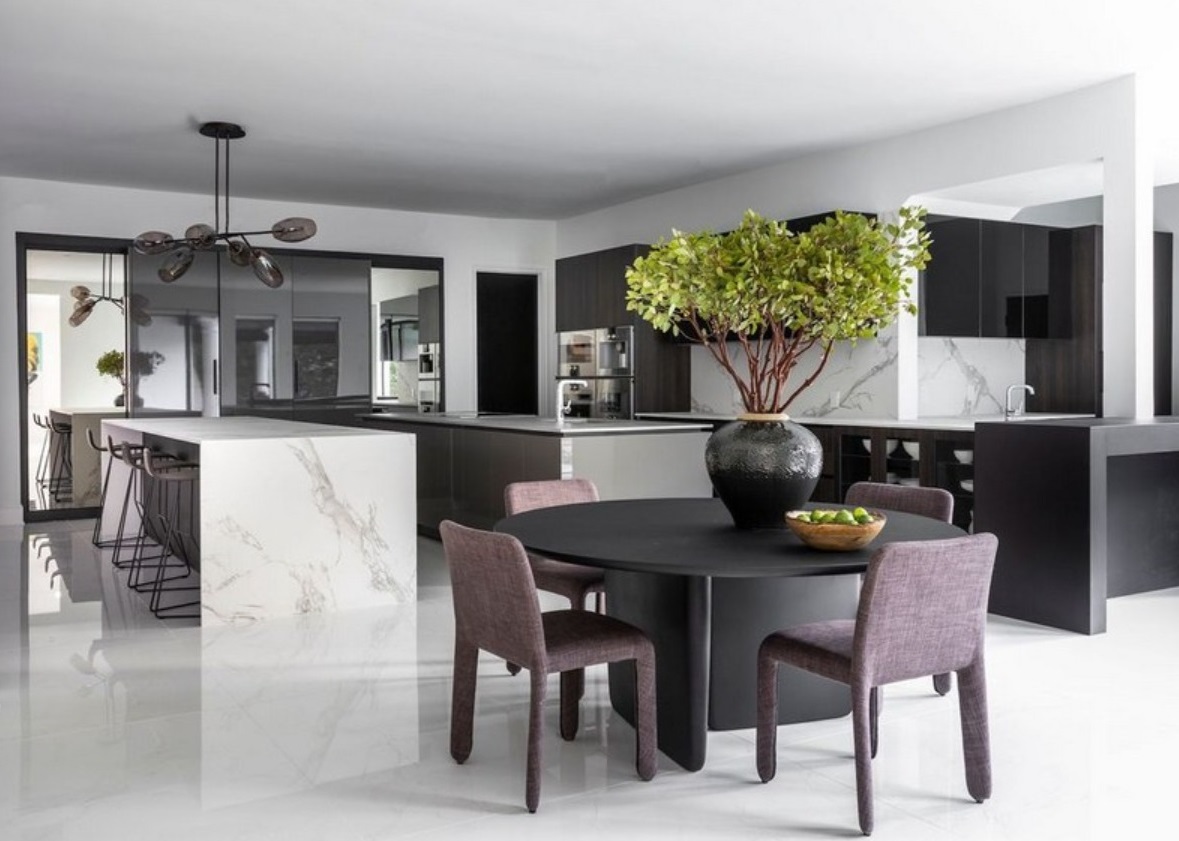
At a glance: 3 most important criteria for a minimalist kitchen
Function: Several well-chosen and multifunctional kitchen appliances provide plenty of space for cooking – even in a small kitchen.
Order: If much clutter is hidden behind fronts and drawers, you’ll quickly lose track of everything you own. A tidy kitchen also exudes a calmness that rubs off on you.
Longevity: With fewer but high-quality appliances, you can enjoy your kitchen longer and consume less.
